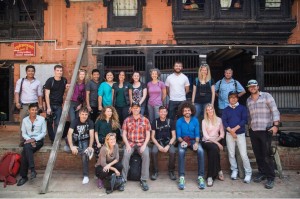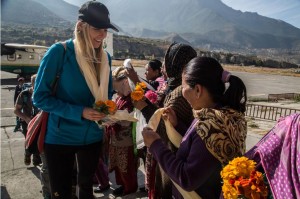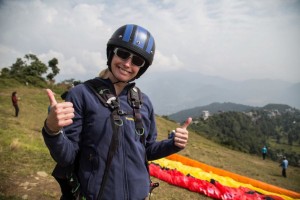By Natasha Martin, AdventureEDU Educator and Sustainable Tourism Consultant
 Many of the destinations in which we provide adventure tourism experiences are challenged by the negative perceptions tourists can hold; whether they are old hangovers of memories of civil war and political upheavals (such as in Bosnia, which is now an exceptional mountain destination) or outdated images of the product offering (such as in Nice, which is still perceived as a “sun and sea” destination despite the wealth of adventure activities available).
Many of the destinations in which we provide adventure tourism experiences are challenged by the negative perceptions tourists can hold; whether they are old hangovers of memories of civil war and political upheavals (such as in Bosnia, which is now an exceptional mountain destination) or outdated images of the product offering (such as in Nice, which is still perceived as a “sun and sea” destination despite the wealth of adventure activities available).
This past spring, I taught a tourism marketing course to a group of public sector officials in Ethiopia. As an illustrative exercise for the class, I posted a quick question on my Facebook page.
I received 118 responses from my group of friends. The majority revealed a negative perception of Ethiopia, with one friend putting it very succinctly: “For me, Ethiopia was branded as the country of famine.”
The thing about these perceptions of Ethiopia, is that they no longer reflect the reality a visitor experiences in the country. Yes, Ethiopia is poor – but the poverty there is nothing compared to the past situation, and not even at the level of what I have seen in other countries.
How can destinations shift the perceptions of tourists to understand the honest truth about destinations?
 It begins with the destination brand and the way in which that brand is brought to life in marketing activities.
It begins with the destination brand and the way in which that brand is brought to life in marketing activities.
A brand is a difficult thing to define, but my preferred definition is Tim Lebrecht’s: Your brand is what people say about you when you aren’t in the room.
The problem in Ethiopia is that there was never a cohesive attempt to update this image,largely created in the 1980s after Bob Geldorf, LiveAid and mass reports of the nation’s devastating drought. Destinations can’t control their brand, but they can manage it. And in countries like Ethiopia (which, was recently rated the best tourism destination by the European Council on Tourism and Trade) the process of revising or updating a national image in the minds of the international community must be strategic and proactive.
Here are five examples of steps countries can take to manage their destination brands:
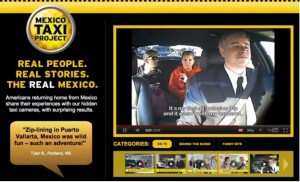 1. Leverage word of mouth. Tourism industry professionals know that word of mouth is our most powerful tool; more than any other source, people turn to friends and family when planning a vacation, and trusted word of mouth recommendations from happy clients mean more for our bookings than marketing campaigns ever have. (In a recent survey of U.S. Adventure Travelers conducted by the ATTA, friends and family led the list of tools used to prepare for a trip, ahead of review sites and travel magazines.)* Mexico was able to effectively leverage word of mouth through their innovative Mexico Taxi Project, where they had actors pose as taxi drivers while asking tourist riders about their experiences in Mexico, secretly filming them. Tourists were overwhelmingly positive about their experiences, which were then shown on YouTube (with permission).
1. Leverage word of mouth. Tourism industry professionals know that word of mouth is our most powerful tool; more than any other source, people turn to friends and family when planning a vacation, and trusted word of mouth recommendations from happy clients mean more for our bookings than marketing campaigns ever have. (In a recent survey of U.S. Adventure Travelers conducted by the ATTA, friends and family led the list of tools used to prepare for a trip, ahead of review sites and travel magazines.)* Mexico was able to effectively leverage word of mouth through their innovative Mexico Taxi Project, where they had actors pose as taxi drivers while asking tourist riders about their experiences in Mexico, secretly filming them. Tourists were overwhelmingly positive about their experiences, which were then shown on YouTube (with permission).
As the head of marketing for the Mexico Tourism Board said: “We felt strongly that Americans talking to Americans about their experiences in Mexico would be stronger than a feel good commercial or an institution like the Mexico Tourism Board talking.”
2. Don’t hide the truth. Tourists sometimes perceive Norway to be cold, dark and expensive. These things can all be quite true depending on who you are and where you are coming from. Rather than trying to refute this image, Norway’s branding and marketing focuses on positive attributes, by focusing on these brand values: Fresh, Real, Adventurous and Open-minded. Its brand promises,“Norway is an adventure, an experience that will stay with me forever,” eliciting an image of a unique and possibly refreshingly different trip experience. The tourism board could never market Norway as “Sunny and Cheap” – that is a promise that it could not keep. And there is nothing worse than a broken promise. It can however, deliver, on fresh, real adventures.
3. Transform the negatives into positives. When Washington, DC rebranded in 2008, research showed that the associations people had with the U.S. capital city were rather dry. The key associations were:
- Federal
- Inspiring
- Sightseeing
- Monuments
Federal → Urban
Inspiring → Inspired / Creative
Sightseeing → Discovery
Monuments → Moments
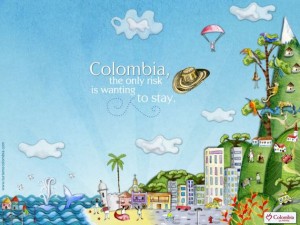 4. Face the Negative. As the point above mentions, countries can’t lie. Another approach is to choose to face the negatives head on, as Colombia did in their “The Only Risk is You’ll Want to Stay,” campaign which directly addressed the concerns of potential tourists, that Colombia was a risky and dangerous destination. The reason this tagline worked is because it was true. Although Colombia has a troubled history of drug trafficking and conflict, once this campaign launched the country was well on the road to recovery and tourists to Colombia felt safe and had fulfilling holidays. The direct approach of the campaign garnered a large amount of social media attention and discussion, prompting far better PR reach than the country could have afforded while setting a wider stage for their testimonials of happy travelers.
4. Face the Negative. As the point above mentions, countries can’t lie. Another approach is to choose to face the negatives head on, as Colombia did in their “The Only Risk is You’ll Want to Stay,” campaign which directly addressed the concerns of potential tourists, that Colombia was a risky and dangerous destination. The reason this tagline worked is because it was true. Although Colombia has a troubled history of drug trafficking and conflict, once this campaign launched the country was well on the road to recovery and tourists to Colombia felt safe and had fulfilling holidays. The direct approach of the campaign garnered a large amount of social media attention and discussion, prompting far better PR reach than the country could have afforded while setting a wider stage for their testimonials of happy travelers.
5. Consult local people. When building a destination brand, a recommended approach is to focus on local residents who are the most passionate brand advocates of their place and more likely to share content as a reflection of their local pride. When it comes to brand image, it doesn’t pay to exclusively hire international consultants who make recommendations from afar or after brief amounts of time in the country. There needs to be dialogue with local people, and the brand and messaging should reflect how people see their home. In 2007, an international branding agency was hired by Invest Lithuania to create a brand to encourage foreign investment and an image of a ‘business friendly destination.’. The agency identified two key brand values “Lively and romantic,’ and ‘thoughtful and reliable’ and came up with the tagline “The most Lithuanian place on earth.” Neither the values or the tagline resonated with Lithuanians, and few of the recommendations were ever implemented.
Conclusion
There can be a need to refresh a tourism brand, especially if the destination has suffered a crisis of some kind. In order to withstand temporary and situational crises, destination brands should be built on authentic foundations, rooted in long-lasting and local truths. In the face of the recent earthquake tragedies in Nepal, the destination, once ready again to receive visitors, will need to adopt a strategy that encompasses approaches above. Applying the recommendations above, Nepal may:
- Leverage word of mouth. Nepal will need to rely on the help of residents, travel journalists and bloggers, and tour operators who can assess the reality of the infrastructure situation and report back to travelers. Once travelers return, these same industry stakeholders can assist in amplifying positive experiences to their friends and family and supporting the image of a resilient and recovering Nepal.
- Don’t hide the truth. Nepalese government, tourism boards and affected tour operators should work together to give detailed and realistic updates about what support area infrastructure can provide for tourism, and the conditions that can be expected.Nepal will soon need to reassure tourists that it is safe to return; these messages will need to reference credible sources and be honest about the risks that exist. An example of this was the recent assessment made by the international firm MiyaMoto, where experienced engineers examined key trekking routes in Annapurna and Everest. They found minimal damage and provided assurances that the trails were safe. A video of that process can be viewed here.
- Face the negative. Some sites in Nepal experienced mass damage and may take years of work before they can restored, if at all. It is important to let potential tourists know which areas of an itinerary may be adversely affected for years to come or no longer able to provide a high quality experience.
- Transform negatives into positives. Now is the time for itinerary planners to assess which sites, routes and experiences in Nepalhave been historically overlooked or undersold. Fresher product from less affected areas can be woven into future experiences, along with interaction with Nepalese organizations focused on rebuilding and supporting those affected most by the disaster.
- Consult local people. Nepal has traditionally been known not only for the stunning mountain ranges but for the its people. A campaign focused on highlighting the hospitality and warm welcome the Nepalese are known for via the voices and images of its people could be a very touching and alluring “welcome back” to worldwide visitors.
*Adventure Travel Trade Association, Attracting And Serving The U.S. Adventure Traveler. 2015. Web. 27 June 2015.
Learn more about AdventureEDU: Education for the Business of Adventure Travel.

